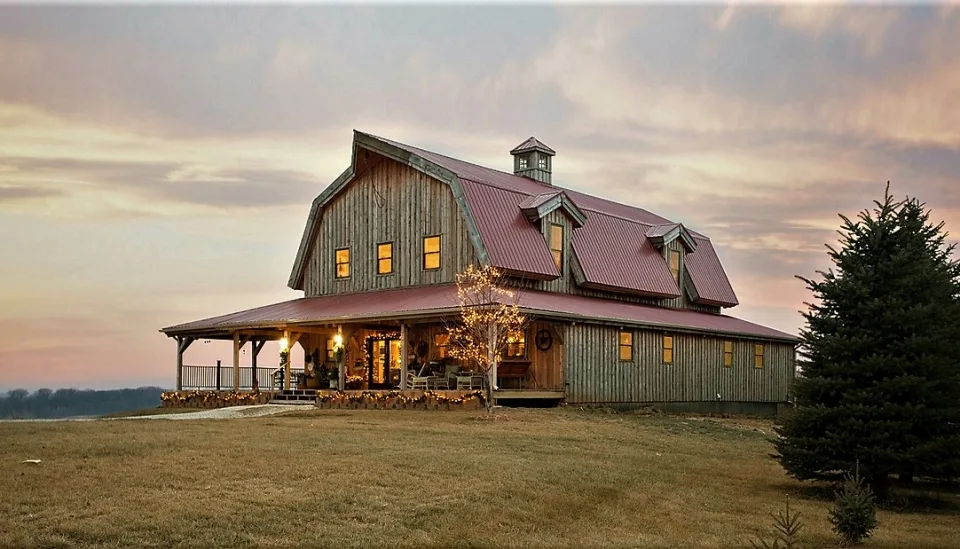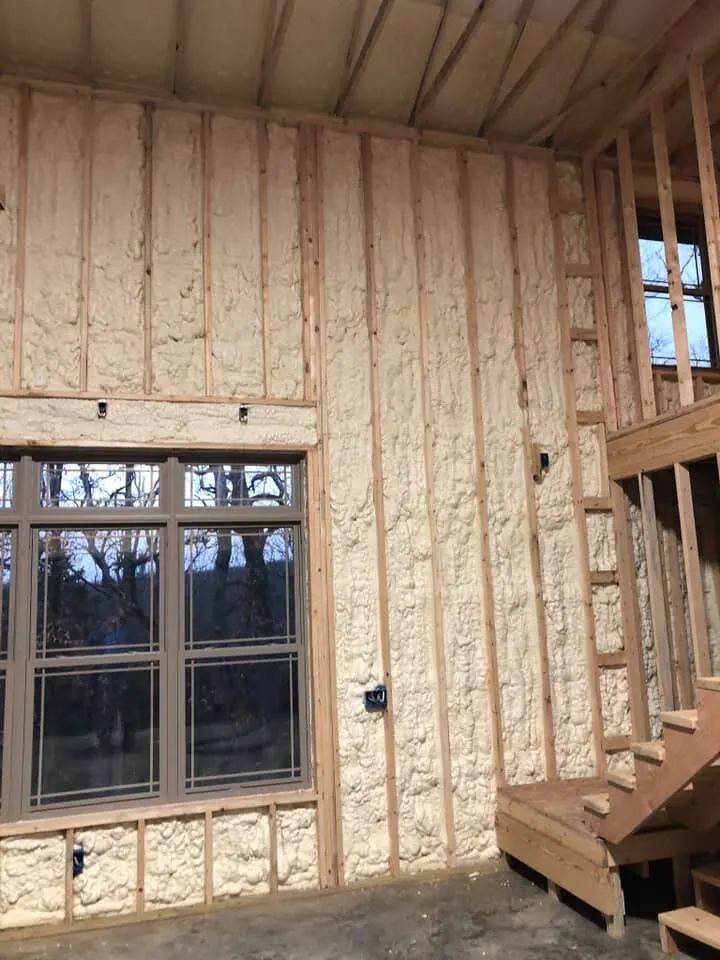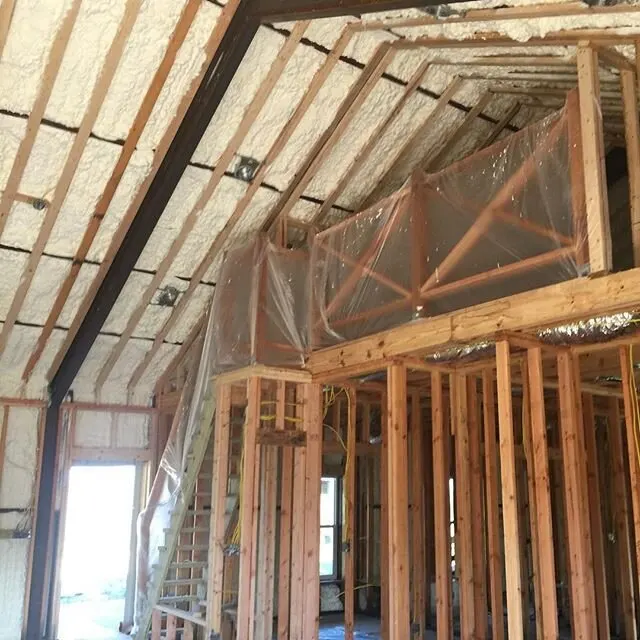When constructing a barndominium, you have a lot of choices to consider, such as the size of the structure, the number of bedrooms, and the overall floor plan. One detail that is easy to overlook is the barndominium insulation.
Barndominiums are often metal structures, which makes them easier and more affordable to construct compared to the typical wood home. They are also often more durable compared to their wooden counterparts. However, you still need insulation.

Page Contents
Why Does Your Barndominium Need Insulation?
If you are planning the construction of a new barndo or have never insulated your existing one, here is what you should know about insulating your barndominium.
Metal buildings are good at retaining heat, which is great when you live in a cool region. However, a metal barndominium without insulation may not be too comfortable in other areas.
Metal is not a good insulator, as it easily absorbs heat and cold. During the hotter months, the sunshine hits the metal sheeting and makes the interior of the building hot and humid. As the temperature drops, the metal sheeting becomes cold, which cools the interior and may create condensation problems.
Insulation helps stop air transfer and keeps temperatures stable. This gives you more control over the temperature inside your barndominium.
Adding barndominium insulation may also prevent condensation. When warm air from the sun or your heater hits the cool metal sheeting, condensation forms. Over time, condensation may damage the foundation or increase the risk of rusting.
Along with shielding your home from temperature changes and condensation, insulation helps create a sound barrier. With the right type of insulation, you can deaden exterior noises, such as the sound of cars or people passing by.
What Is the Best Barndominium Insulation?
As with a traditional wood home, you have a variety of insulation materials and methods to choose from. Some of the most common types of insulation for barndominiums include the following:
- Batts
- Loose-fill
- Spray foam
- Rigid board
- Vapor barriers
Each option comes with pros and cons. Before choosing insulation, you should learn more about each option.
Batt Insulation
Batt insulation, or blanket insulation, is the traditional choice for most homes. It is cheap and easy to install. Blanket insulation comes in rolls that you can cut to size and install in the wall cavities.
Blanket insulation is the most affordable option and comes in a variety of thicknesses to resist heat flow. The heat resistance is labeled as the “R-value” of the insulation.
Blanket insulation typically has an R-value between 2.9 and 3.8, which is comparable to open-cell foam and slightly lower than loose-fill insulation.
Loose-Fill Insulation
Loose-fill insulation (blown-in insulation) includes loose fibers or pellets that are blown into the cavities between the walls. The fibers may include rock wool, fiberglass, or shredded recycled newspaper.
Blown-in insulation is often blown-in through small holes in the exterior or interior walls, making it more convenient for existing barndominiums. For example, if you built your barndo without insulation, installing blanket insulation would require you to tear down the interior walls.
Blown-in insulation is one of the more expensive insulation options but provides superior coverage. The blown-in fibers can reach every nook and cranny of the wall cavity. You get a thorough seal. However, you may need to install a separate radiant barrier.
A radiant barrier blocks and reflects heat, helping to keep your home cool. It typically consists of a reflective material, such as foil. Other types of insulation, such as blanket insulation, often include a thin radiant barrier on one or both sides of the material.
Spray Foam Insulation
Spray foam insulation offers many of the same advantages as blown-in insulation. Both options involve inserting the material through holes in the wall cavities, allowing you to add insulation after building your barndominium. However, spray foam provides better coverage.

With spray foam insulation, a polymer is combined with a foaming agent and sprayed into the wall cavities. A liquid is then sprayed into the mixture, causing it to expand. As the mixture dries, it forms a solid mass with air-filled cells.
There are two types of spray foam insulation – open-cell and closed-cell. Open-cell foam has cells that are completely encapsulated, which makes the foam softer and more flexible. Closed-cell foams are pressed together to prevent moisture and air from entering.
Closed-cell foam is often the preferred choice for metal buildings, as it expands less and provides a vapor barrier.
Rigid Board Insulation
Rigid board insulation involves the installation of stiff boards made of polyurethane or fiberglass. The boards are cut to fit the wall cavities and are easy to install when constructing your barndominium. The convenience of using stiff boards also makes this option perfect for insulating flat roofs.
One of the benefits of rigid board insulation is improved soundproofing. The rigid boards dampen sound better than other types of insulation.
Building codes in some regions may require an additional flame-retardant layer. The most common option is the installation of ½-inch gypsum board over the insulation.
Average Cost of Insulating a Barndo

The cost of barndominium insulation depends largely on the size of your property, the type of insulation used, and the installation method. However, the average cost is about $1.25 to $1.75 per square foot.
With a 1,500 square-foot barndominium, you may spend $1,875 to $2,625 on the insulation materials alone. Blanket insulation and rigid boards are the most affordable options. Spray foam and blown-in insulation cost more but offer better coverage and easier installation for existing barndominiums.
How to Insulate a Barndominium/Metal Building
The first step to insulating a metal building is to choose the right insulation. If your home is already constructed, spray foam and blown-in insulation are the easiest to install.
For new barndominium construction, blanket insulation and rigid boards are the easiest, especially if you are handling the construction yourself.
You should also check the local building codes. Some areas require a minimum R-value for the insulation. You may also need an additional vapor barrier in some regions.
When installing blanket insulation or rigid boards, measure the distance between the wall studs. For attics and floors, measure the distance between the joists. Multiply the total measurements by the height of the ceiling to estimate the amount of insulation that you will need for the project.
Before installing the barndominium insulation, check the plumbing. If pipes run through the wall cavities or floors where you plan on installing insulation, you may need to add foam pipe sleeves to protect against condensation.
The next step is to seal any gaps between fixtures, joists, and studs. Use caulk around smaller spaces. You can skip this step when using a do-it-yourself spray foam kit.

When installing barndominium insulation, start with the attic and work your way down. The attic is likely to require the most work, such as fitting plumbing or electrical lines with foam sleeves.
Cut blanket insulation or rigid boards to fit between the wall cavities before installing the drywall. If using spray foam or blown-in insulation, follow the instructions provided with the insulation. While the details may vary, spray foam and blown-in insulation typically require access to the wall cavity after constructing the walls.
Last Thoughts
In the end, if you want maximum coverage and resistance to heat, moisture, and fire, choose closed-cell spray foam barndominium insulation. If you want the most affordable option for new barndominiums, consider using blanket insulation or rigid boards.
Along with these suggestions, consider working with an experienced contractor. They can help you compare options and handle the installation process.
If you would like more guides like this one, check out the rest of BarndominiumLife.com. There, you will find more helpful tips and tricks from the pros. You will also find featured barndominiums, barndominium floor plans, and information on financing and insurance. Knowing as much as you can will help you get the best results for your dream home.
Gail currently spends her free time geeking out about what’s new and trending in the world of barndominiums.
She is the former executive editor of BarndominiumLife.com and loves working with the team and members of the barndominium community. She now contributes to the blog on occasion, but only when she feels like it!

Mark Nicodemus
Saturday 29th of June 2024
I'm looking to build a barndominium. I'm still in the process of research at this time, deciding on a floor plan. Submitting for bids and checking out material costs. Checking out subcontractors reviews. Talking with the county building department.
Barndominium Life
Sunday 30th of June 2024
Awesome! Check out our barndominiums made easy program to get started. https://www.barndominiumlife.com/barndominium-program/